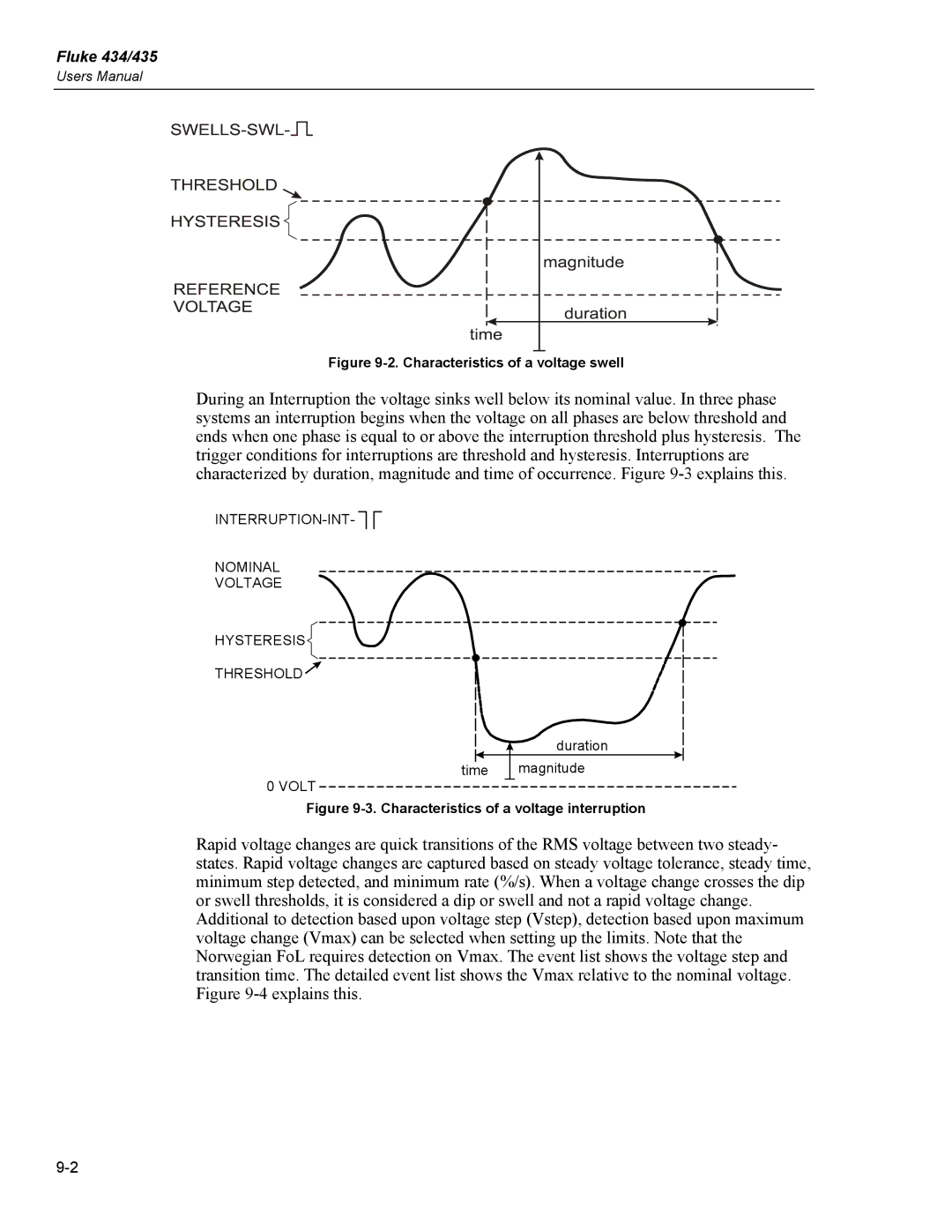
Fluke 434/435
Users Manual
Figure 9-2. Characteristics of a voltage swell
During an Interruption the voltage sinks well below its nominal value. In three phase systems an interruption begins when the voltage on all phases are below threshold and ends when one phase is equal to or above the interruption threshold plus hysteresis. The trigger conditions for interruptions are threshold and hysteresis. Interruptions are characterized by duration, magnitude and time of occurrence. Figure
![]()
![]()
NOMINAL
VOLTAGE
HYSTERESIS![]()
THRESHOLD![]()
time
0 VOLT
duration
magnitude
Figure 9-3. Characteristics of a voltage interruption
Rapid voltage changes are quick transitions of the RMS voltage between two steady- states. Rapid voltage changes are captured based on steady voltage tolerance, steady time, minimum step detected, and minimum rate (%/s). When a voltage change crosses the dip or swell thresholds, it is considered a dip or swell and not a rapid voltage change. Additional to detection based upon voltage step (Vstep), detection based upon maximum voltage change (Vmax) can be selected when setting up the limits. Note that the Norwegian FoL requires detection on Vmax. The event list shows the voltage step and transition time. The detailed event list shows the Vmax relative to the nominal voltage. Figure
